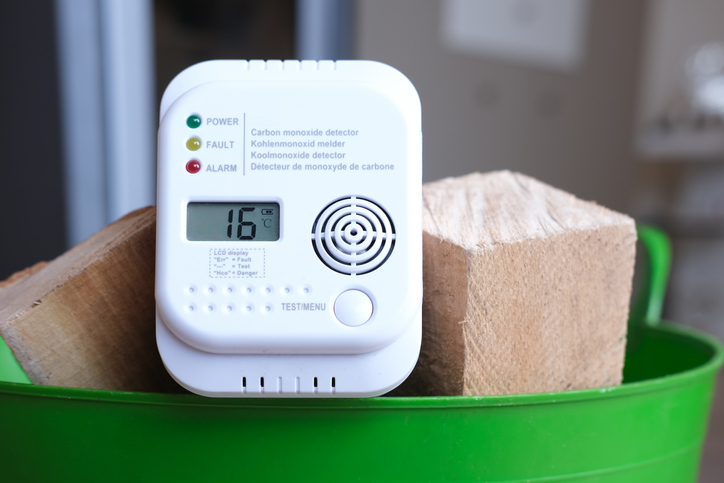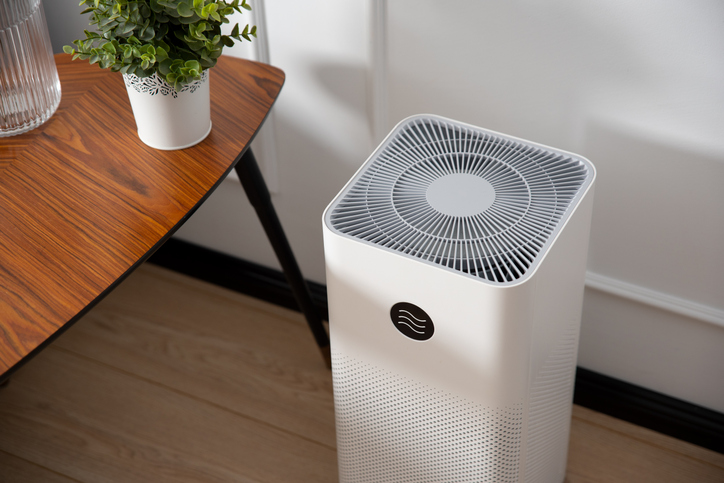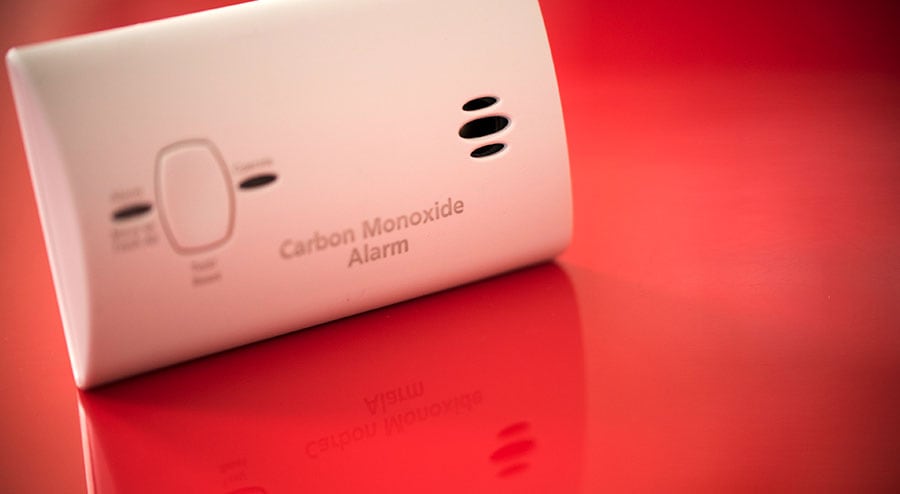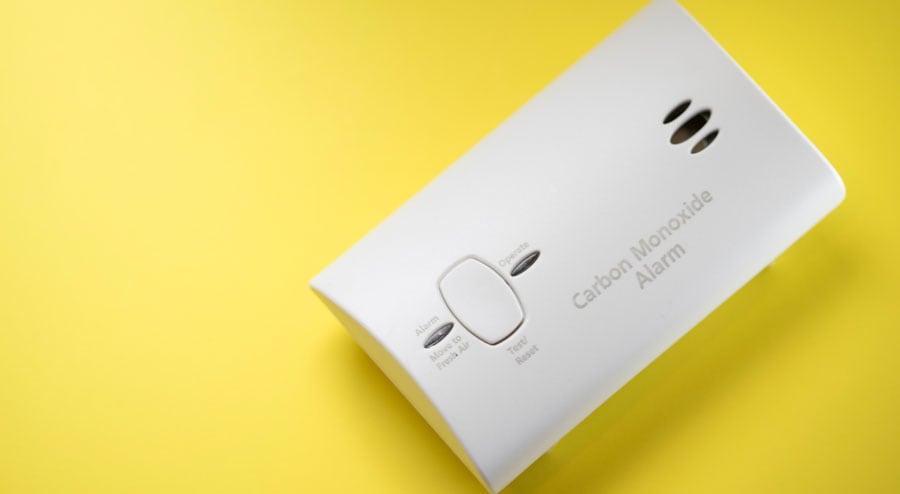Carbon monoxide, a colorless and odorless gas, poses a significant threat to human health when present in indoor environments. It is produced by the incomplete combustion of fuels such as gas, oil, wood, and coal. The alarming aspect of carbon monoxide is that it cannot be detected without the aid of specialized equipment, making it all the more insidious.

Carbon monoxide poisoning can result in a range of symptoms, from mild headaches and dizziness to more severe effects like confusion, unconsciousness, and even death. What makes it particularly concerning is that it can affect anyone, irrespective of age or health condition. This makes it crucial for individuals and households to prioritize carbon monoxide safety measures to protect themselves and their loved ones.
- Understanding Carbon Monoxide
- Recognizing the Dangers of Carbon Monoxide
- Carbon Monoxide Detection and Prevention
- Safety Measures for Fuel-Burning Appliances
- Carbon Monoxide Safety in the Winter
- Avoiding Vehicle-Related Carbon Monoxide Exposure
- Carbon Monoxide Safety in Multi-Story Buildings
- Long-term Effects and Special Considerations
- Take Away
Installing carbon monoxide detectors is a pivotal step in safeguarding against this silent threat. These detectors are designed to sound an alarm when they sense elevated levels of carbon monoxide in the air, providing an early warning that allows people to evacuate and seek fresh air before the situation becomes life-threatening. Regular maintenance and testing of these devices are essential to ensure their effectiveness. Moreover, taking precautionary measures when using fuel-burning appliances, such as proper ventilation and correct installation, significantly reduces the risk of carbon monoxide leaks in the first place.
Carbon monoxide safety should be taken seriously, especially during the winter months when heating systems are used more frequently, and the risk of exposure increases. By staying informed about the dangers of carbon monoxide, recognizing the symptoms of poisoning, and implementing preventive measures, individuals can create a safer living environment for themselves and their families. Awareness and proactive action are key to mitigating the risks associated with carbon monoxide and preventing potential tragedies.
Understanding Carbon Monoxide
Carbon monoxide (CO) is a deadly gas that is both colorless and odorless, making it imperceptible to human senses. It forms when fuels like natural gas, propane, gasoline, wood, and coal are burned incompletely due to insufficient oxygen. In home environments, common sources of carbon monoxide include malfunctioning or poorly maintained fuel-burning appliances, such as gas furnaces, water heaters, stoves, and fireplaces. Additionally, using generators, charcoal grills, or portable heaters indoors can also lead to dangerous levels of carbon monoxide.
To ensure a safe living environment, it is vital for homeowners to be aware of these common sources and take proactive measures to prevent carbon monoxide leaks. Regular inspection, maintenance, and proper ventilation of fuel-burning appliances are essential steps in reducing the risk of carbon monoxide exposure at home. Additionally, never using portable generators or grills indoors and installing carbon monoxide detectors in key areas of the house are effective measures to detect the presence of this silent killer and prevent potential poisoning incidents. By staying informed about the dangers of carbon monoxide and implementing preventive measures, individuals can protect themselves and their loved ones from this lethal gas.
Recognizing the Dangers of Carbon Monoxide
Carbon monoxide can have severe health effects. It is very important to understand how carbon monoxide can impact your health as well as be able to recognize signs of poisoning and how to act.
Carbon Monoxide Health Effects
Carbon monoxide poses a severe threat to human health because it interferes with the body’s ability to transport oxygen to vital organs and tissues. When inhaled, it binds to hemoglobin in the blood, forming carboxyhemoglobin, and reducing the amount of oxygen that can be carried. As a result, the body’s organs, particularly the brain and heart, are deprived of the oxygen they need to function properly. Prolonged exposure to elevated levels of carbon monoxide can lead to serious health consequences, including neurological damage, heart problems, and even death.
Carbon Monoxide Poisoning Signs
Recognizing the symptoms of carbon monoxide poisoning must be done in a timely manner to prevent further harm. Symptoms may vary depending on the concentration of carbon monoxide and the duration of exposure. Initially, individuals may experience mild symptoms, such as headaches, dizziness, nausea, and weakness. As exposure continues, symptoms can escalate to confusion, disorientation, difficulty breathing, and loss of consciousness. Importantly, these symptoms can be mistaken for flu-like illness, making it imperative to consider carbon monoxide exposure when multiple household members exhibit similar symptoms simultaneously.
Install carbon monoxide detectors throughout the home, especially in sleeping areas and near fuel-burning appliances, to protect against carbon monoxide poisoning. These devices should meet recognized safety standards and be tested regularly to ensure their proper functioning. If carbon monoxide poisoning is suspected, immediate action is necessary. Evacuate the premises, seek fresh air outdoors, and contact emergency services for medical attention. Early detection and prompt response are vital to preventing severe health consequences from carbon monoxide exposure.
Carbon Monoxide Detection and Prevention
While dangerous, the threats that carbon monoxide pose can be eliminated with effective prevention and detection methods. For instance, installing carbon monoxide detectors, understanding how they differ from smoke detectors, and regularly maintaining the installments can all be tools in mitigating the associated risks.
Installing Carbon Monoxide Detectors
Installing carbon monoxide detectors is a crucial step in ensuring the safety of your household. These life-saving devices are designed to detect the presence of carbon monoxide in the air and emit a loud alarm to alert occupants of potential danger. It is essential to place carbon monoxide detectors strategically throughout the home, particularly in sleeping areas and near fuel-burning appliances. Brands like Kidde, First Alert, and Nest offer reliable and widely available carbon monoxide detectors that meet recognized safety standards. The cost of a quality carbon monoxide detector can range from $20 to $50, making it a relatively affordable investment for the protection it provides.
Carbon Monoxide vs. Smoke Detectors
Carbon monoxide detectors and smoke detectors serve different purposes. While smoke detectors are designed to detect airborne particles produced by a fire, carbon monoxide detectors are specifically built to identify elevated levels of carbon monoxide gas. Both detectors play crucial roles in home safety, and it is recommended to have both types installed to provide comprehensive protection against different hazards. Some newer models of smoke detectors, such as Nest Protect, also come equipped with carbon monoxide detection capabilities, offering a convenient combination of features in a single device.
Carbon Monoxide Detector Maintenance
Proper maintenance and testing of carbon monoxide detectors are vital to their effectiveness. Regularly check that each detector is functioning correctly by testing the alarm and ensuring that the batteries are replaced as needed. Most carbon monoxide detectors have a lifespan of around 5 to 7 years, after which they should be replaced to ensure optimal performance. Some models may have an end-of-life warning feature that indicates when the detector needs replacement. Always follow the manufacturer’s guidelines for maintenance and replacement to keep your carbon monoxide detectors in peak condition and your home safe from this silent threat.
Implementing and following these guidelines are very important in detecting carbon monoxide and protecting your home and family against potential threats. Installing the proper detectors and regular maintenance can create a safe household.
Safety Measures for Fuel-Burning Appliances
There are various steps homeowners can take to decrease carbon monoxide leaks and exposure. Understanding how to safely use carbon monoxide producing appliances such as stoves and heaters allows for you to increase the safety of your home.
Safe Use of Stoves and Heaters
When using fuel-burning appliances such as stoves and heaters, be sure to take necessary precautions to prevent carbon monoxide leaks. Ensure that all stoves, ovens, and heaters are installed by qualified professionals and in compliance with local building codes. Regularly inspect and maintain these appliances to address any potential issues promptly. Gas stoves and ovens should have a blue flame; if the flame appears yellow or orange, it may indicate incomplete combustion and the production of carbon monoxide. Never use gas stoves or ovens for heating purposes, as this can lead to dangerous carbon monoxide buildup. For added safety, consider using carbon monoxide detectors in areas near these appliances, providing an early warning system in case of leaks.
Wood-Burning Stove Safety
Wood-burning stoves require proper ventilation and maintenance to minimize the risk of carbon monoxide exposure. Before installing a wood-burning stove, consult a professional to ensure it is safely placed, away from combustible materials and with proper ventilation through a chimney or flue. Regularly clean the chimney to prevent blockages that could lead to carbon monoxide buildup indoors. Opt for well-seasoned wood to reduce the production of smoke and harmful emissions. It is also crucial to install carbon monoxide detectors in areas near wood-burning stoves to detect any potential leaks and ensure the safety of household members.
By following these safety measures for fuel-burning appliances, homeowners can significantly reduce the risk of carbon monoxide leaks and create a safer living environment for themselves and their families. Vigilance in the proper use, maintenance, and ventilation of these appliances is key to preventing carbon monoxide poisoning and its potentially life-threatening consequences.
Carbon Monoxide Safety in the Winter
As the use of carbon monoxide increases in the colder months, it is important to take preventative measures and regularly maintain housing systems in order to ensure proper ventilation while creating a warm household.
Winter Carbon Monoxide Risk
As the colder months set in and heating systems are in regular use, the risk of carbon monoxide exposure increases. During winter, households tend to keep doors and windows closed to retain heat, which can lead to poor ventilation and the buildup of carbon monoxide indoors. Additionally, heating appliances that have not been properly maintained or are used inefficiently are more likely to produce this toxic gas. The risk is particularly high if fuel-burning appliances, such as gas furnaces, water heaters, and fireplaces, are installed in enclosed spaces without adequate ventilation.
Heating System Safety
To ensure carbon monoxide safety during winter have all fuel-burning appliances professionally inspected before the start of the winter season to detect and address any potential leaks or malfunctions. Proper ventilation is crucial when using these appliances, so make sure chimneys and flues are clear of debris and obstructions. Installing carbon monoxide detectors in close proximity to heating systems and sleeping areas adds an extra layer of protection by providing early warning in case of a leak. Additionally, remind household members never to use ovens, stoves, or portable generators as heating sources, as this can lead to dangerous carbon monoxide buildup. By being proactive and diligent in maintaining and using heating systems safely, families can enjoy a warm and secure winter season without the risk of carbon monoxide poisoning.
Avoiding Vehicle-Related Carbon Monoxide Exposure
It is important to consider how your vehicle can pose carbon monoxide risks. For instance, carbon monoxide exposure can occur in garage related instances, due to portable generators, and more.
Garage Carbon Monoxide Risk
Vehicle-related carbon monoxide exposure poses a significant danger, especially when cars are left running in enclosed spaces such as attached garages or closed parking areas. Even with the garage door partially open, dangerous levels of carbon monoxide can accumulate and seep into the living spaces of a home. To prevent this, it is crucial to never leave a running vehicle unattended in a garage, even if it is just for a short period. Additionally, avoid warming up the car by letting it idle in the garage, as this can lead to carbon monoxide buildup. Always ensure that the garage is adequately ventilated and, if possible, open the garage door completely when starting the car or operating it inside.
Portable Generator Safety
During power outages or outdoor activities, portable generators can be a valuable source of electricity. However, using these generators indoors or in enclosed spaces poses a severe risk of carbon monoxide poisoning. To ensure portable generator safety, always operate it outdoors in a well-ventilated area, far away from windows, doors, and vents that lead indoors. Portable generators should never be placed in garages, crawl spaces, or basements. Consider using a reliable carbon monoxide detector, such as the Kidde Nighthawk, to monitor indoor air quality when using a generator. Investing in a generator that features automatic shut-off in case of low oil levels or overloading, like the Honda EU2200i, adds an extra layer of safety.
Being aware of the risks associated with vehicle-related carbon monoxide exposure and adhering to safety precautions allows for individuals to protect themselves and their families from this preventable danger. Vehicle maintenance and generator safety protocols are simple yet essential steps that can significantly reduce the risk of carbon monoxide poisoning incidents in homes and other enclosed spaces.
Carbon Monoxide Safety in Multi-Story Buildings
Certain structures including apartments and those undergoing renovations pose certain risks when it comes to carbon monoxide. Proper ventilation and placement of detectors is extremely important in ensuring safety in these special cases.
Carbon Monoxide Safety in Apartments
In multi-story buildings, such as apartments or condominiums, proper ventilation and carbon monoxide detector placement are critical for ensuring the safety of all residents. Properly maintained ventilation systems help prevent the buildup of carbon monoxide and ensure the prompt removal of any potential gas leaks. Building managers and landlords should conduct regular inspections of ventilation systems and address any issues promptly. Tenants should also be vigilant in reporting any unusual odors, signs of poor ventilation, or malfunctioning fuel-burning appliances to building management.
For added protection, carbon monoxide detectors should be installed on each level of the building and near sleeping areas. Brands like First Alert and Kidde offer reliable and affordable options for carbon monoxide detectors suitable for multi-story buildings. The cost of these detectors typically ranges from $20 to $50, depending on the features and brand. Regular testing and battery replacement of carbon monoxide detectors are essential to ensure they are operational at all times.
Carbon Monoxide Risk During Renovation
The risk of carbon monoxide exposure can increase during construction or renovation work in multi-story buildings. Workers using fuel-burning equipment or working in enclosed spaces may inadvertently produce carbon monoxide gas. To mitigate these risks, contractors and construction companies must prioritize proper ventilation during renovation projects. This may involve the use of fans or temporary ventilation systems to maintain a safe environment for workers and residents alike.
Building managers must communicate renovation plans to all residents, informing them about potential disruptions and any necessary safety measures. If residents detect any unusual odors or suspect carbon monoxide leaks during renovation work, they should immediately evacuate the area and notify the building management. By addressing construction and renovation risks and ensuring proper ventilation and carbon monoxide detector placement, multi-story buildings can maintain a safe living environment and prevent carbon monoxide-related incidents.
Long-term Effects and Special Considerations
It is important to consider how carbon monoxide is dangerous to our long term health as well as to recognize certain groups of individuals who are at a higher risk such as children and the elderly.
Long-Term Carbon Monoxide Effects
While acute carbon monoxide poisoning can lead to immediate and severe health issues, long-term exposure to low levels of carbon monoxide can also have adverse effects on health. Prolonged exposure may cause chronic health problems, particularly in vulnerable individuals such as children, the elderly, and those with pre-existing medical conditions. Chronic exposure can lead to persistent headaches, fatigue, difficulty concentrating, and increased susceptibility to respiratory infections. Over time, it can also contribute to the development of cardiovascular issues and neurological disorders. It is essential for individuals to be aware of the risks of long-term carbon monoxide exposure and take preventive measures to minimize exposure in their homes.
Carbon Monoxide Safety for Children and Elderly
Children and the elderly are at a higher risk of carbon monoxide poisoning due to factors such as weaker immune systems, reduced ability to detect odors, and decreased mobility. For families with children, it is vital to create a safe environment by installing carbon monoxide detectors on every floor and teaching children about the dangers of carbon monoxide and the importance of never playing near fuel-burning appliances. For households with elderly members, extra care should be taken to ensure proper ventilation and regular maintenance of heating systems and appliances. If an elderly individual exhibits any symptoms of carbon monoxide poisoning, seek medical attention immediately.
In homes with vulnerable individuals, investing in advanced carbon monoxide detectors with digital displays, like the Kidde Nighthawk, can provide real-time information on carbon monoxide levels, aiding in the early detection of potential leaks. Additionally, consider providing family members and caregivers with carbon monoxide awareness training to recognize symptoms and take appropriate action in case of an emergency. By being proactive and mindful of the unique risks faced by children and the elderly, families can create a safer living environment and protect their loved ones from the dangers of carbon monoxide exposure.
Take Away
Prioritizing carbon monoxide safety is essential for safeguarding homes and loved ones. Installing reliable carbon monoxide detectors, maintaining fuel-burning appliances, and ensuring proper ventilation are key preventive measures. By being proactive and informed, individuals can protect against the silent threat of carbon monoxide poisoning and maintain a secure living environment.




